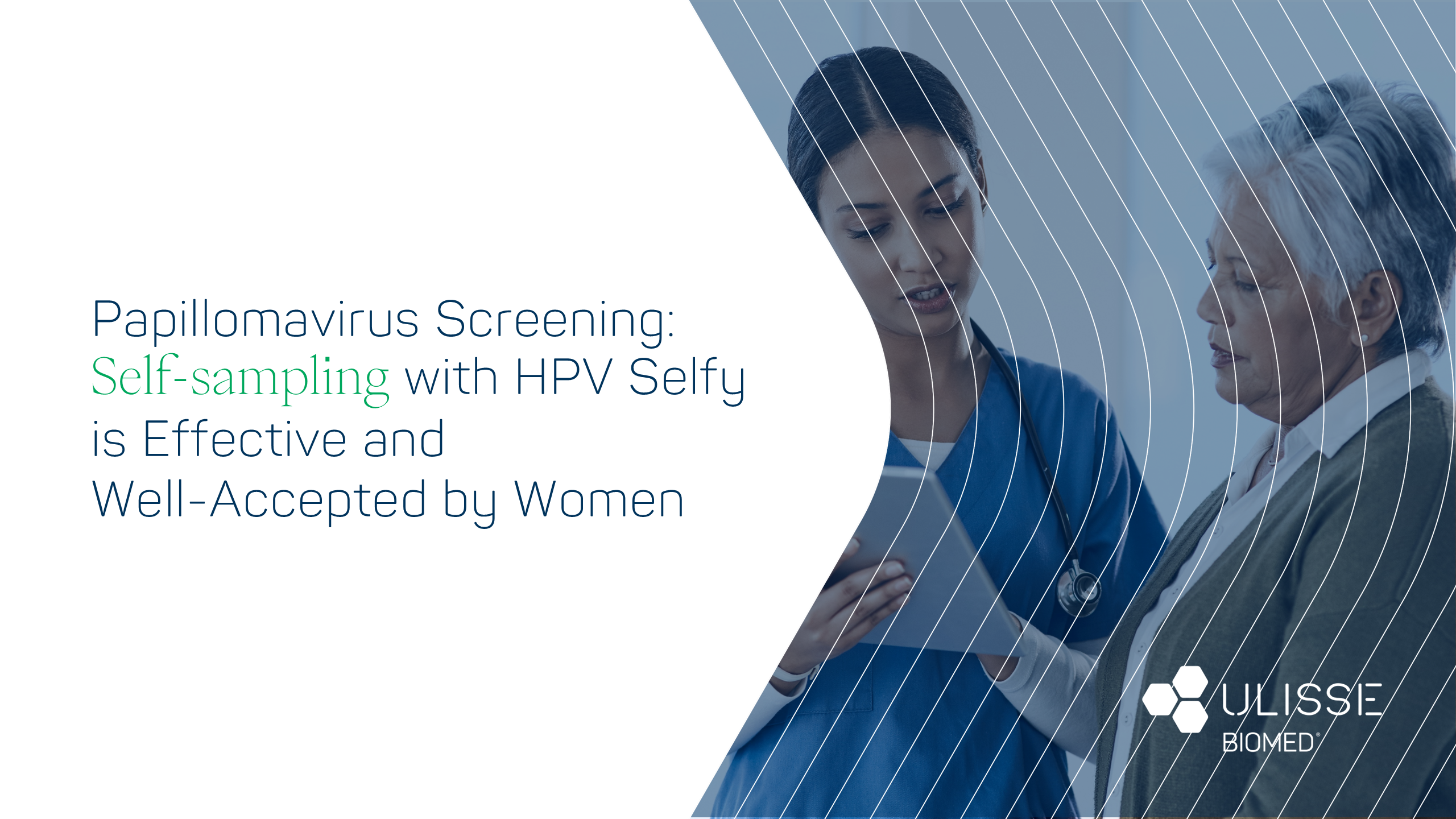27 October 2025
Reading time [minutes]: 16
Distributed Diagnostics
Distributed PCR: reducing TCO in laboratories
The decentralised molecular diagnostics model as a lever for reducing the total cost of ownership in clinical laboratories, transforming fixed costs into flexible services and optimising resources, time and investments.
Abstract
Reducing the Total Cost of Ownership (TCO) in molecular diagnostics means addressing all cost components — not only the price of instruments, but also sample logistics, reporting times, personnel, maintenance, consumables and infrastructure. The distributed PCR model shifts the centre of gravity of analysis closer to the point of care, eliminating the “invisible” costs of distance (transport, waiting times, process duplication) and converting faster clinical times into measurable operational savings. This approach, which delivers reliable results in a very short time, improves the use of resources and reduces unnecessary hospitalisations or isolation, with a direct impact on costs and quality of care.
In this scenario, Ulisse Biomed offers Hyris System™ — a portable PCR platform consisting of bCUBE™ devices and the bAPP™ cloud — as a concrete lever to bring “laboratory accuracy” to the field. Ease of use and digital integration enable non-specialist staff to perform advanced molecular tests, reducing organisational bottlenecks and maintaining the value of the test on site.
From a financial perspective, diagnostics-as-a-service allows for a shift from high CapEx to predictable OpEx (pay-per-test or subscription), aligning costs with actual volumes. The laboratory avoids capital immobilisation and benefits from continuous updates, while the supplier consolidates recurring revenues: an alignment of incentives that accelerates the adoption of the model. The result is lower TCO, greater operational resilience and the ability to expand the test menu without mammoth infrastructure: a technological and managerial choice that combines innovation, efficiency and economic sustainability throughout the entire diagnostic lifecycle.
Snapshot
- Distributed PCR (decentralised diagnostics)
A model in which PCR tests are performed close to the point of use (clinics, small laboratories, wards) rather than being sent to a centralised laboratory. This eliminates the time and cost of transporting samples, enabling rapid results and local management. - TCO (Total Cost of Ownership)
The total cost of ownership of a technology, including not only the purchase price but also operating expenses: maintenance, consumables, personnel, infrastructure and management throughout the entire life cycle. It is the key indicator for assessing the economic viability of diagnostic solutions. - Point-of-Care (POC)
Rapid diagnostic test performed directly at the point of care or in the community, close to the patient. It drastically reduces turnaround time (e.g. minutes or hours instead of days) and can be performed by non-specialised personnel thanks to its ease of use. - Diagnostics-as-a-Service (DaaS)
A business model in which diagnostics are offered as an integrated service (instrumentation on hire or loan for use, dedicated reagents, cloud platform and support) rather than through the sale of equipment. It allows laboratories to access advanced technologies with recurring operating costs (pay-per-test or subscription) instead of a large initial investment. - Hyris System™
Ulisse Biomed's proprietary platform for distributed PCR, consisting of portable bCUBE devices for real-time PCR and the bAPP cloud for data management and analysis. Designed to bring high-accuracy molecular testing outside of large laboratories, with dedicated consumables and integrated connectivity.
1. The total cost of ownership in molecular diagnostics
Ensuring accurate molecular testing at the lowest total cost is a strategic priority for laboratories and financial stakeholders. The total cost of ownership (TCO) of a molecular diagnostic solution includes not only the purchase of instruments, but also all operating costs: installation, calibration, maintenance, consumables, specialised personnel, dedicated laboratory space, and even the “invisible” costs associated with waiting times and sample logistics. In traditional centralised models, these costs can rise exponentially. Suffice it to say that centralised PCR systems require expensive equipment and highly qualified personnel, often concentrated in a few national centres. As a result, samples must be physically shipped to these laboratories, requiring transport (including temperature-controlled transport) and bureaucratic management, introducing significant delays.
In contexts such as sub-Saharan Africa, for example, centralised PCR has resulted in average reporting times of 2–3 months [1, 2]. Even in advanced countries, the centralised model creates inefficiencies: complex supply chains, redundant activities and waste due to batches of tests performed at fixed intervals regardless of clinical urgency. Distributed PCR diagnostics aims to revolutionise this paradigm by bringing testing where it is needed, when it is needed.
Ulisse Biomed, with its Hyris System™ platform (bCUBE devices connected to the bAPP cloud), embodies this vision: decentralising PCR to cut total costs and improve the operational efficiency of laboratories. Let's take a look at the concrete economic advantages this model offers compared to the traditional approach.
2. Less logistics, more efficiency: cutting operating costs
One of the main drivers of TCO reduction with distributed PCR is the elimination of logistics costs and process inefficiencies. In a centralised workflow, each sample travels, requires tracking, often needs to be stored under controlled conditions and handled by multiple operators. All of this represents a significant cost per test. By distributing diagnostic capacity across the territory, these costs are drastically reduced. In other words, distributed PCR eliminates the “hidden cost” of distance because the test is performed on-site: no more express couriers to send test tubes to remote centres, no administrative delays, no delays due to sample backlogs. The combined effect of speed and proximity also generates efficiency in clinical times, which translates into tangible economic savings. For example, obtaining a result in one hour instead of 1–2 days can avoid precautionary hospitalisations or unnecessary isolation. An analysis conducted in a hospital setting estimated that the use of rapid bedside PCR tests for influenza in the emergency department saved over £113 per patient on the first day of hospitalisation alone, thanks mainly to a 91% reduction in unnecessary isolation days made possible by immediate and highly specific diagnosis [3].
Similarly, in emergency departments, it has been calculated that the adoption of rapid respiratory and pulmonary panels at the point of care can generate significant savings by avoiding costly empirical tests and therapies thanks to earlier targeted diagnosis [4]. These quantitative examples highlight a key point: time is money in healthcare, and decentralised diagnostics reduce turnaround time (TAT), transforming immediacy of results into economic efficiency. By reducing downtime (waiting for reports, precautionary quarantines, prolonged hospital stays awaiting diagnosis), laboratories and hospitals cut operating costs and free up valuable resources.
From the point of view of peripheral laboratories – small diagnostic centres, clinics, local surgeries – being able to perform molecular tests on site also means avoiding costly duplication and intermediate steps. Instead of collecting samples and outsourcing analysis to third parties (paying for an external service and suffering the associated delays), the decentralised laboratory keeps the value of the test in-house, better amortising the investment in its own equipment and optimising the use of staff. What's more, the automation and ease of use of modern POC systems make it possible to deploy analysts on higher value-added activities, leaving routine tasks to automated devices. As a large-scale review points out, point-of-care testing has “undeniable advantages, including ease of use, low cost, portability, rapid results and the possibility of self-testing”, with analytical performance increasingly close to that of reference methods [5].
In practice, decentralised platforms also enable facilities with limited resources or small staffs to offer advanced testing without having to equip themselves with full-fledged centralised laboratories. This technological democratisation improves accessibility and reduces cost disparities between large and small diagnostic centres.
3. From Capex to more advantageous financial models
Reducing TCO also means rethinking how diagnostic expenditure is supported, not just how much. Distributed PCR enables innovative financial models that shift the economic burden from initial investments to variable costs per test.
Traditionally, acquiring state-of-the-art molecular instrumentation required significant upfront capital expenditure (CapEx) for the purchase of analysers, plus annual fixed costs for maintenance and upgrades. This could be prohibitive for many small to medium-sized laboratories, especially considering the risk of technological obsolescence. Today, thanks to “as-a-Service” formulas, suppliers offer subscription or pay-per-test solutions, where the laboratory pays a fee commensurate with actual usage, often including reagents, support and access to cloud-based analysis platforms. The advantage for customers is clear: immediate access to cutting-edge technologies without tying up capital, predictable and scalable operating costs, and continuous upgrades without additional expenditure.
For the supplier (such as Ulisse Biomed in the case of the Hyris System™), this translates into recurring revenues and greater customer loyalty – but from the laboratory's TCO perspective, it is a revolution. Costs become variable and directly linked to test volume, eliminating waste: if no tests are performed, there is no charge (or only a small charge); if volume increases, economies of scale are partially transferred to the customer. In essence, the risk of technological investment shifts from the laboratory to the service provider, who can distribute it across a large installed base. It is therefore not surprising that the market for point-of-care molecular systems is booming, with a compound annual growth rate of approximately 11% and an expected value of $3.4 billion by 2028 [6]. This growth reflects the demand for more flexible and cost-effective solutions that combine technological innovation and economic sustainability.
Conclusions
For CFOs, purchasing managers and investors in the diagnostics sector, distributed PCR now represents much more than a technological advance: it is a game changer in the cost model. Implementing a network of decentralised molecular tests means being able to deliver faster results with fewer resources, convert fixed costs into variable costs and expand the diagnostic offering without the burden of mammoth infrastructure. The total cost of ownership of a diagnostic programme based on POC solutions is significantly lower than the traditional paradigm, as demonstrated by both independent economic analyses and the direct experience of numerous early-adopter laboratories.
Of course, adopting this model requires a change in management and organisational mindset: new systems must be integrated into the workflow, staff must be trained to use them to their full potential (fortunately, the learning curve is steep, as today's POC devices do not require extensive training or advanced technical skills [5]), and solid partnerships with suppliers must be established. But the benefits far outweigh the initial challenges.
Reducing TCO in molecular diagnostics frees up financial resources that can be reinvested in other critical areas (staff recruitment, test menu expansion, research and development), while improving clinical outcomes through more timely diagnoses. Ultimately, distributed PCR gives laboratories that adopt it a clear and measurable economic competitive advantage: test costs finally under control, greater operational resilience and the ability to adapt quickly to needs – from the peak of a pandemic to the efficient management of daily routine. In an era where sustainability and results must go hand in hand, decentralised diagnostics appears to be the winning path for combining innovation and ROI in the world of laboratory services.
Sources and Bibliography
- Sutcliffe C.G., van Dijk J.H., Moyo S., Bolton C.M., Cotham M., et al. (2014). Turnaround time for early infant HIV diagnosis in rural Zambia: a chart review. PLoS ONE, 9(1): e87028. DOI: 10.1371/journal.pone.0087028
- Vojnov L., Markby J., Boeke C., Harris L., Ford N., Peter T. (2017). Impact of SMS/GPRS printers in reducing time to early infant HIV diagnosis results: systematic review and meta-analysis. Journal of Acquired Immune Deficiency Syndromes (JAIDS), 76(5): 522–526. DOI: 10.1097/QAI.0000000000001526
- Diel R., Nienhaus A. (2019). Rapid Point-of-Care Influenza Testing for Patients in German Emergency Rooms – A Cost-Benefit Analysis. Journal of Health Economics and Outcomes Research, 6(3): 203–212. DOI: 10.36469/001c.11206
- Rahamat-Langendoen J., Buter H., Jurimae K., et al. (2019). Impact of molecular point-of-care testing on clinical management and in-hospital costs of patients suspected of influenza or RSV infection: a modeling study. Journal of Medical Virology, 91(8): 1408–1414. DOI: 10.1002/jmv.25479
- Fragkou P.C., Mermiri M., Varounis C., et al. (2022/2023). Performance of point‑of‑care molecular and antigen‑based tests for SARS‑CoV‑2: a living systematic review and meta‑analysis. Clinical Microbiology and Infection, 29(3): 291–301. DOI: 10.1016/j.cmi.2022.10.028
- MarketsandMarkets (2024). Point‑of‑Care Molecular Diagnostics Market – Size & Share (Forecast to 2028). Disponibile su: marketsandmarkets.com













